Tea Blending Guide: How To Add Herbs
by Jessica Child
July 20, 2021

Many common herbs can make your teas unique to you and absolutely magical! Here are some recommended teas to go with your favorite herbs!
For adding the dried teas for a blend, these can be added at the same brewing instructions they come with. However, feel free to reduce it to 1/2 or 3/4 of the usual portion if you feel it might be too strong, or you can treat it like concentrate and dilute it a bit after brewing.
As always, if you're unsure of what you have, err on the side of caution and opt to simply admire the foliage.
Basil
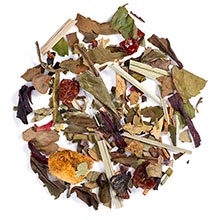
If strawberry and basil is your cup of tea, brew up your home-grown basil and Wild Strawberry. This bright, fruity blend will make a perfect dessert. Adagio makes it even easier for you with their White Strawberry Basil blend.
You can add caffeine to this classic combo with Strawberry flavored black tea, or a bright pick-me-up with basil and Lemon Soleil!
Chamomile

You can start reserved around the 1 tsp per 8 oz mark and go from there, or if you know you really like chamomile tea, start at 1 tbsp per 16 oz.
The first thing to try is, Chamomile with our Peppermint; it's a fabulous choice!
Even better, if a blend like Foxtrot appeals to you, add a touch of our Rooibos Vanilla for extra creaminess to make it your own. This combo isn't just a good dessert-like, pre-bedtime brew, it's great for a mood boost when you're not feeling the best.
Finally, mix Chamomile and Peppermint with Lemongrass or our for a perfect trio!
Ginger
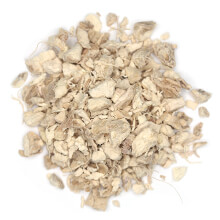
Try a small nibble of your ginger before adding it to your teas. If it's not very flavorful, add a few extra slices. If it's almost orange in color and very spicy, dial it back.
Regardless, ginger tea does dilute very well, so don't be afraid to go for your ginger dreams here and top it off with some warm water if it's too much!
If you're able to grow ginger, you've got a whole world of opportuniteas ahead of you!
You can simply brew a teaspoon or two of sliced, chopped, or dried Ginger with a couple slices of lemon and honey for a basic ginger and lemon tea. This cup is good for days where you aren't feeling well just as much as days you just want something fun to sip on!
Brew it with Sour Apple or Passionfruit Tango to highlight the bite of the ginger with a little 'something' to complement it!
Looking for something to give you a bit of a buzz? Citrus Mint Green might be just what you're looking for. Mint, citrus, green tea, and ginger all contribute a unique twist to give you a buzz that lasts all day!
Lavender
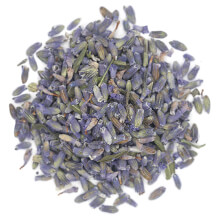
Have you tried Adagio's Earl Grey Lavender? If you love that blend, then this combo is for you! Grab Earl Grey Moonlight and a touch Lavender. This incredible combo is hard to beat with the floral and citrus bringing out the best Ceylon has to offer!
Don't forget to enjoy the classic relaxation blend of all relaxation blends: Lavender and Chamomile! If you didn't grow any chamomile this year, don't worry! Adagio's Chamomile flowers will make a worthy substitute- they're high-quality flowers grown along the Nile River. The tango of these two herbs can make any long day excellent in just a few minutes of steeping!
Lemon Balm
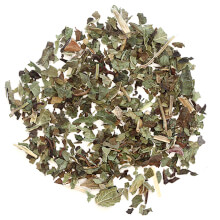
This herb is much more mellow in brewing, so for your fresh leaves, use up to 1 tbsp of muddled leaves per 8 oz of water, or 4 teaspoons of dried leaves per 8 oz.
Not sure what to do with all that lemon balm now that the bees are done with it? It's a wonderful addition to your favorite brews! Lemon Balm pairs well with fruity flavors, so Fruit Medley is a great choice. It also pairs with Peppermint, Lavender, Ginger, and even green tea! I would suggest Sleeping Dragon.
Experiment with blends by adding a handful of up to about 1/4 cup or just a pinch of dried lemon balm to one of these!
Lemongrass
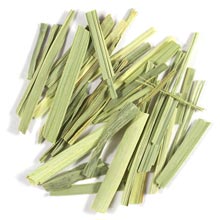
This beautiful plant is hard to pass up at the nursery, and a gem in savory and sweet uses!
Bring out Lemongrass' sweet, calming features with a blend that can keep toe-to-toe with it like Double Ginger.
For a caffeinated brew, white and green teas are great options for lemongrass.
For green teas, try adding some lemongrass to Calypso Green or Autumn Mist Green. For white tea, try adding it to Buddha's Dream!
These gentle flavors will help your lemongrass shine its brightest and bring out its best qualities.
Mint

This versatile herb adds a refreshing flavor that will go with teas from any section of our catalog, depending on which variety you have! For tried and true combos, we have a couple of suggestions based on Peppermint flavors but don't be afraid to try out blends with whatever variety you have.
It's best friends any day with Ceylon Sonata. This winning pairing brings a little life to any day!
Or, for a Moroccan Mint dupe, brew Peppermint with Gunpowder. Add some sugar, and steep for a couple minutes with 180 degree water for this classic minty experience.
Combine Peppermint with Chamomile and Rooibos, as mentioned above for a perfect nighttime treat. Or, if you'd like this mix with less effort, grab 40 Winks.
If your mint aspires to outsize a skyscraper, don't be afraid to try brewing it into your teas! We're sure you'll be delighted by it!
Sage
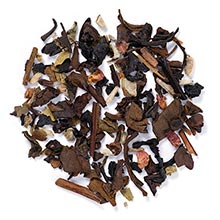
Sage uses just about 5 fresh leaves (about 2 tbsp) per 8 oz of tea or 1 tsp of your dried leaves to make a unique and almost sweet cup of tea!
Generally, this herb is best combined with Peppermint! If you have some, add a pinch of thyme and rosemary. Lemon Verbena or Lemon Balm are great additions as well. These herbs combine into a tea that is excellent for taking the edge off of the winter blues, taming sore throats, or just getting to fully enjoy a sage plant that thought it could rule the garden.
If you'd like to try Adagio's sage blend, try out Blackberry Sage Oolong for a unique treat.
If you're feeling inspired to brew up your herbs but unsure where you want to start, try Adagio's Herbal Portions Sampler. Since herbal teas tend to go fairly well together, this sampler will likely have a good match for any herbs you've grown in your garden this year!
We hope these suggestions encourage you to try using your herbs in blends that help you enjoy them to their fullest!